Symbols & Artwork
The Sandra R. Berman Center for Humanity, Tolerance and Holocaust Education was very deliberate in choosing the symbolic artwork that adorns its walls. Learn more about the symbols and their significance.
Chosen symbols include:
The Shofar
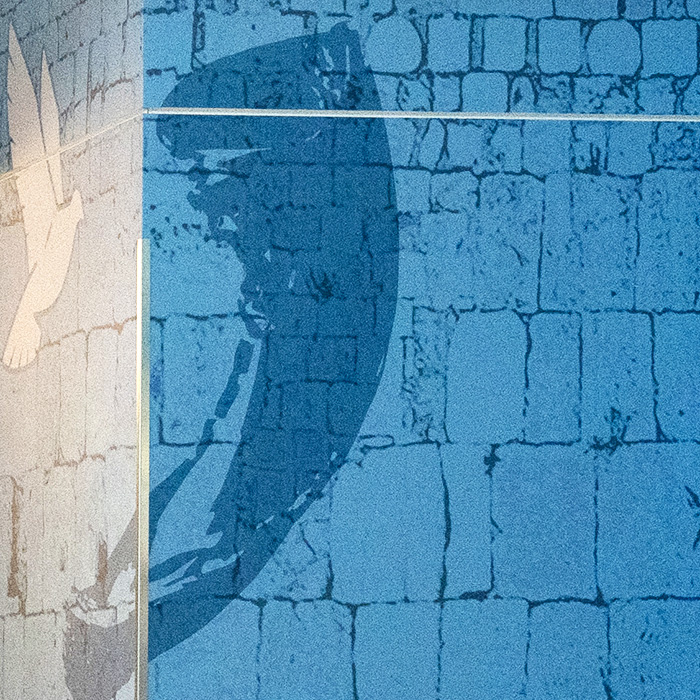
A shofar is a ram’s horn that is blown like a trumpet every weekday morning in the month of Elul (except for the day before Rosh Hashanah). It is also blown during both days of Rosh Hashanah unless the first day falls on Shabbat. In those cases, it is used only on the second day and at the end of Yom Kippur.
The shofar is created by hollowing out a ram’s horn, shaping and then polishing it.
The Shofar in History and Now
The shofar was often sounded to signal important events, summoning the people to assemble or announcing the beginning of months and holidays.
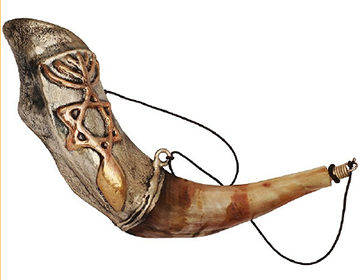
It was also used as a war horn during battle or to proclaim the anointing of a new king. In modern Israel, it is blown at the swearing-in of the president of the state.
Hamsa: The Hand
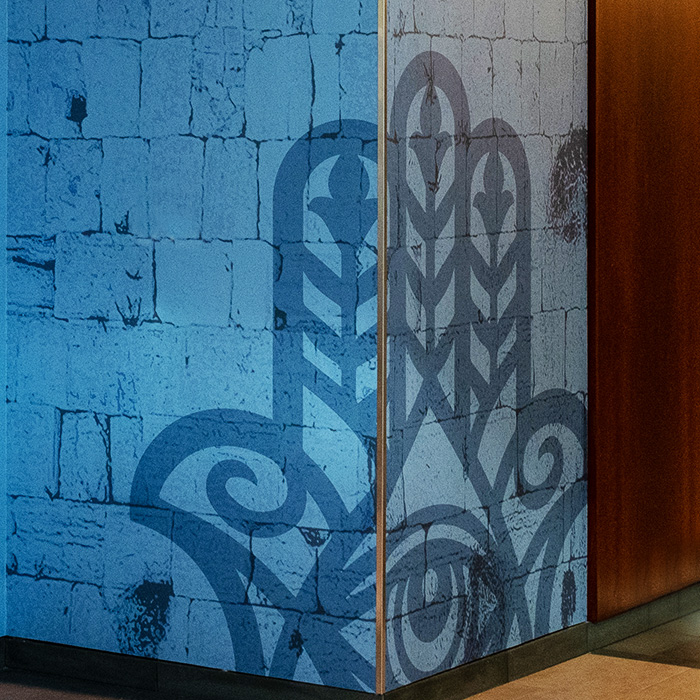
The hamsa is typically an image of a palm with either 3 or 5 fingers with an eye in its center. It has been interpreted by scholars as a Jewish, Christian or Islamic amulet, and as a pagan fertility symbol. Used as a sign of protection, it is traditionally believed to provide defense against the “evil eye.”
Jewish people may use the hamsa to invoke the hand of God or to counteract the evil eye.
Variations of the Hamsa
In addition to an eye, icons used in the hamsa include fish, the Star of David, prayers for the traveler, the Shema, blessings over the house and the colors red and blue. Both of those colors are said to thwart the evil eye.
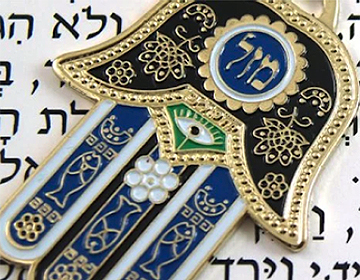
The Hamsa in Islam and Christianity
In Islam, the hamsa is called the Hand of Fatima in honor of one of the daughters of the Prophet Mohammed. In Islamic tradition, the five fingers represent the Five Pillars of Islam.
In some Christian usages, it is referred to as the Hand of Mary, a representation of Mary, the mother of Jesus.
The Pitcher
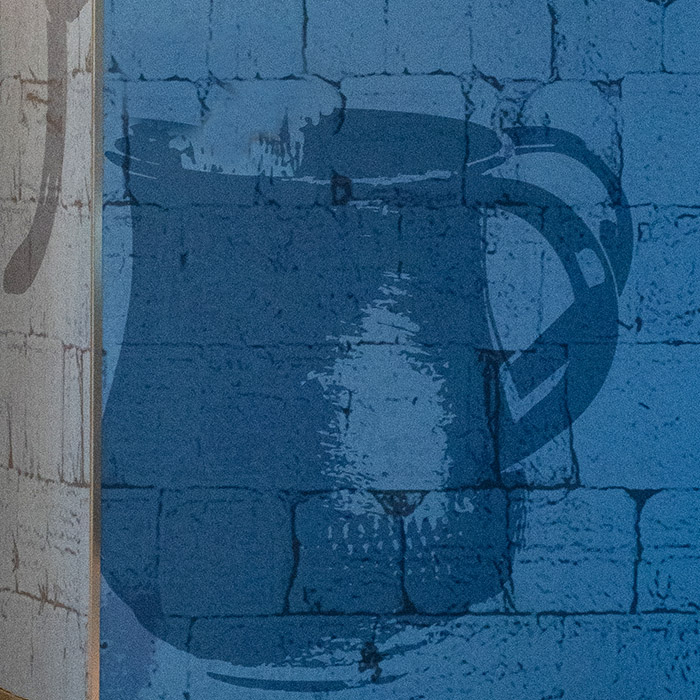
Jewish gravestones often feature several unique symbols, including a pitcher.
A gravestone marked with a pitcher of water is generally that of a Levite. Believed to be chosen to be God’s special ministers, they are honored with washing the hands of the Kohen (a priest) before the priestly blessing is administered.
The pitcher is also used during the Sukkot holiday to pour water on the altar as a sacrifice to God.
Symbolism of the Pitcher
- Protection — In ancient Rome, pitchers were used as a symbol of protection.
- Duality — In ancient Chinese civilizations, a pitcher was often used in pairs to represent the necessary duality of existence; In Egyptian culture, various gods and goddesses were often depicted holding twin pitchers.
- Baptism — In Christianity, a pitcher may be used to pour water onto a person’s head during baptism.
- The Purnakumbha — In Hinduism, an earthen pitcher is placed with the chief deity before starting a Puja.
Greek Mythology
In Greek mythology, the god Apollo was often depicted holding a pitcher as a symbol of healing. The Greeks believed that pitchers were carriers of holy water, which could cure ailments and ward off negativity. The ancient Greeks also utilized pitchers in pairs as a symbol of unity and partnership.
The Dove
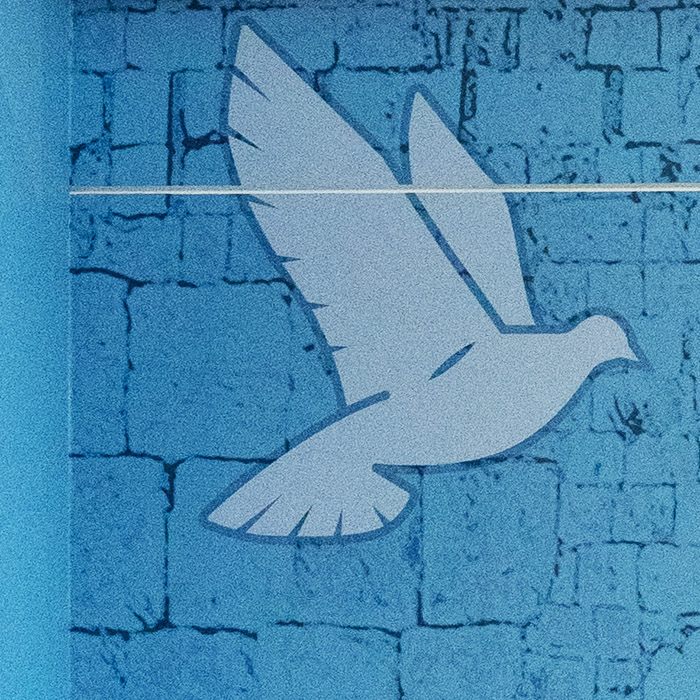
The dove and olive branch have been used as a symbol and metaphor for the Jewish people since Biblical times.
Song of Songs provides one possible explanation for this symbolism: “Just as a dove whose fledglings are taken from her nest still doesn’t abandon her nest ... so are the Jewish people faithful to God.”
Because doves are so firmly associated with peace, they often serve as an international symbol of cooperation and hope. Dove imagery represents both unity and optimism.
The Story of the Dove
The dove and the olive branch have become a universal symbol of peace due to the somewhat misunderstood biblical story of the dove bringing back an olive leaf to Noah to signify that the waters had receded after the Great Flood. In Christian art, the presence of a dove indicates the presence of the Holy Spirit.
More Symbolic Meanings
For the ancient Greeks, the dove was one of the animals of the goddess of love and beauty, Aphrodite. In Hindu mythology, doves are associated with both love (Kama Deverides) and death (Yama). In Navajo healing ceremonies, the dove is often invoked to help bring balance, harmony and wellness to the body, mind, and spirit.
The Western Wall
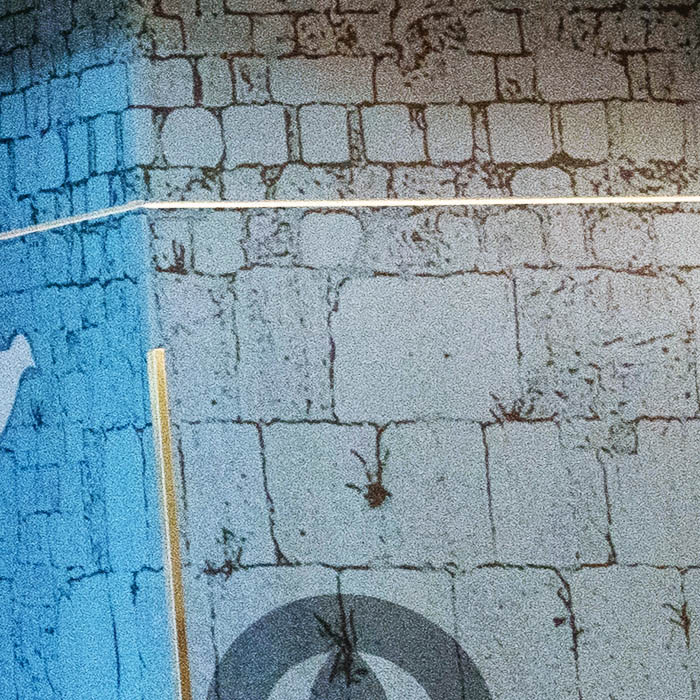
Initially erected by Herod the Great to expand the Second Jewish Temple in Jerusalem, the Western Wall is made of big lower blocks (placed by Herod), medium-sized middle blocks (added in the Umayyad era) and small top blocks (added during the Ottoman era).
The site is considered holy because it is connected to the Temple Mount and it is the holiest place accessible to Jewish individuals for pilgrimage and prayers since entry to the Temple Mount is restricted.
The wall is also symbolic in that, though Jerusalem has been destroyed and then rebuilt nine times, the wall has remained intact.
Islamic and Christian Significance
Since the wall now forms part of a larger wall that surrounds the Dome of the Rock and Al-Aqsa Mosque, Muslims regard this site as the third holiest in Islam, after Mecca and Medina. The Bible describes the Temple and its rituals in detail, and the New Testament contains several references to the Temple.
The Temples
The Western Wall is the only remains of the retaining wall surrounding the Temple Mount, the site of the First and Second Temples of Jerusalem. The First Temple was destroyed by the Babylonians in 587–586 BCE, and the Second Temple was destroyed by the Romans in 70 CE.